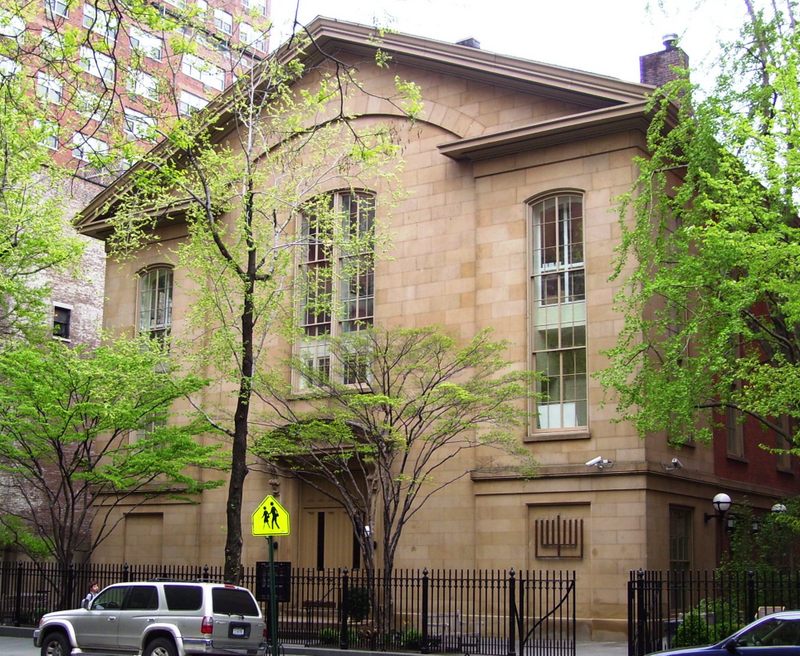10. Brotherhood Synagogue: 28 Gramercy Park South, Gramercy Park

The Brotherhood Synagogue in Gramercy Park played a significant role in the Underground Railroad, as well as in more recent progressive causes. The synagogue is located on the land of the former 20th Street Meeting House, a Quaker group whose members were active in the abolitionist movement. Some members reportedly moved south to launch trade schools for freed slaves. Historical records also note that the meeting house’s second-floor sheltered fugitive slaves on the New York Underground Railroad. Still remaining on site is a tunnel underneath the building used as an escape route to not draw suspicion.
Eventually, Rabbi Irving J. Block opened a Jewish congregation at the site in 1954. The Brotherhood Synagogue operated for over 20 years at the site of the Village Presbyterian Church nearby before moving to 28 Gramercy Park South. The synagogue was the first in the city to open a homeless shelter, and it has collaborated over the years with other religious groups across the city.
11. 95 Barrow Street and 45 Grove Street, West Village
In the West Village, there are at least two residential locations connected to the Underground Railroad. The first is 95 Barrow Street, once a New York Underground Railroad safe house. The residence dates back to 1847 and is speculated to have been a notable shelter for fugitive slaves. It was also home to modern dance pioneers Alwin Nikolais and Murray Louis. The home was on the market in 2015 for $21,900 a month in rent.
The second is a mansion at 45 Grove Street, which dates back to the 1830s. The home was likely a secret stop on the Underground Railroad. Perhaps more surprisingly, actor Samuel K. Chester, who lived at the home, said John Wilkes Booth visited in 1865 and attempted to get him to join in on Booth’s conspiracy to overthrow the government. Later that year, Booth would assassinate Abraham Lincoln.





